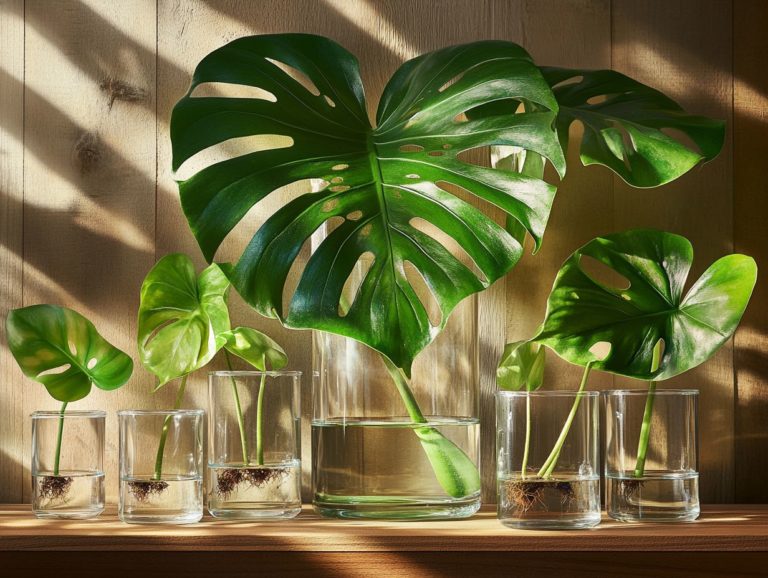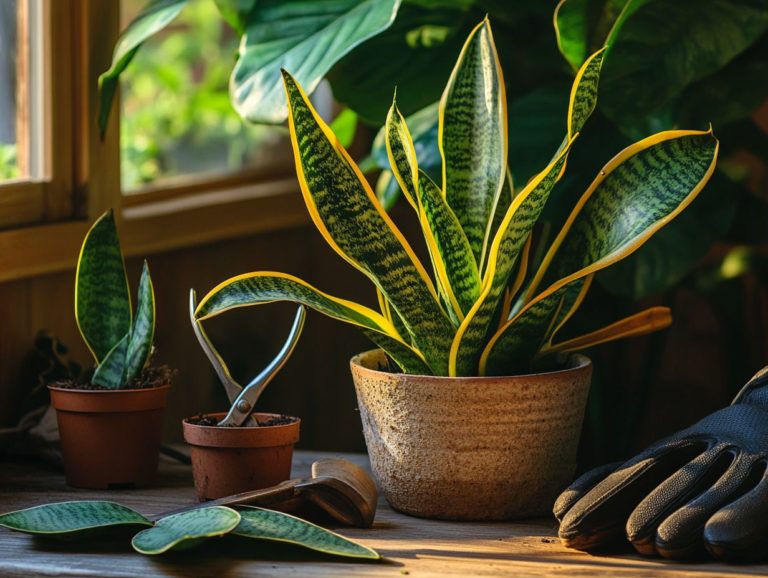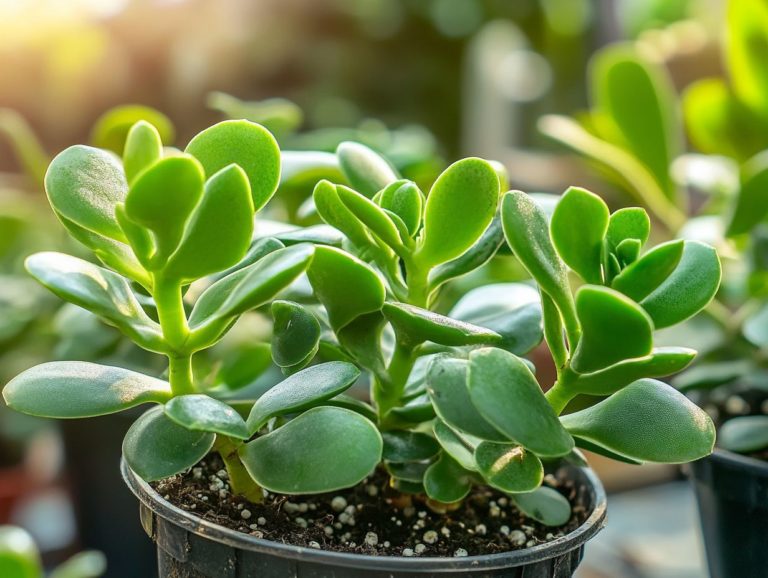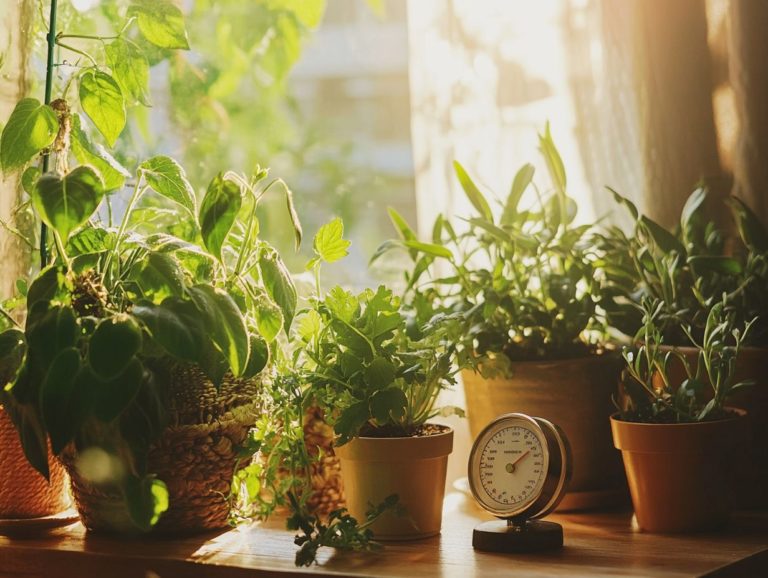When to Use Soil for Plant Propagation
Plant propagation is an essential practice for gardeners and plant enthusiasts, providing a sustainable method to cultivate new plants from existing ones. This article delves into the benefits of using soil for propagation, emphasizing its natural nutrients and structural support that foster healthy growth. You will also learn about various techniques for growing new plants, including water propagation, as well as the importance of healthy stems in your plant care routine.
Discover which types of plants thrive best in soil, learn about the optimal timing for propagation, and receive a step-by-step guide on effectively preparing soil with a suitable potting mix and organic fish emulsion a natural fertilizer made from fish waste that helps roots grow strong for enhanced root growth. Common challenges will also be addressed, ensuring your propagation efforts are successful.
Let s dive into the exciting world of soil propagation, exploring various plant types that can thrive in this environment, from members of the Aroid family to popular houseplants like ZZ plants and pothos!
Contents
- Key Takeaways:
- Benefits of Using Soil for Plant Propagation
- Types of Plants that Thrive with Soil Propagation
- When to Use Soil for Plant Propagation
- How to Prepare Soil for Plant Propagation
- Troubleshooting Common Issues
- Frequently Asked Questions
- What is the best time to use soil for plant propagation?
- Can I use soil for plant propagation in any type of container?
- What type of soil should be used for plant propagation?
- Is it necessary to sterilize the soil before using it for plant propagation?
- Are there any specific techniques for using soil for plant propagation?
- Can I reuse the soil after plant propagation?
Key Takeaways:
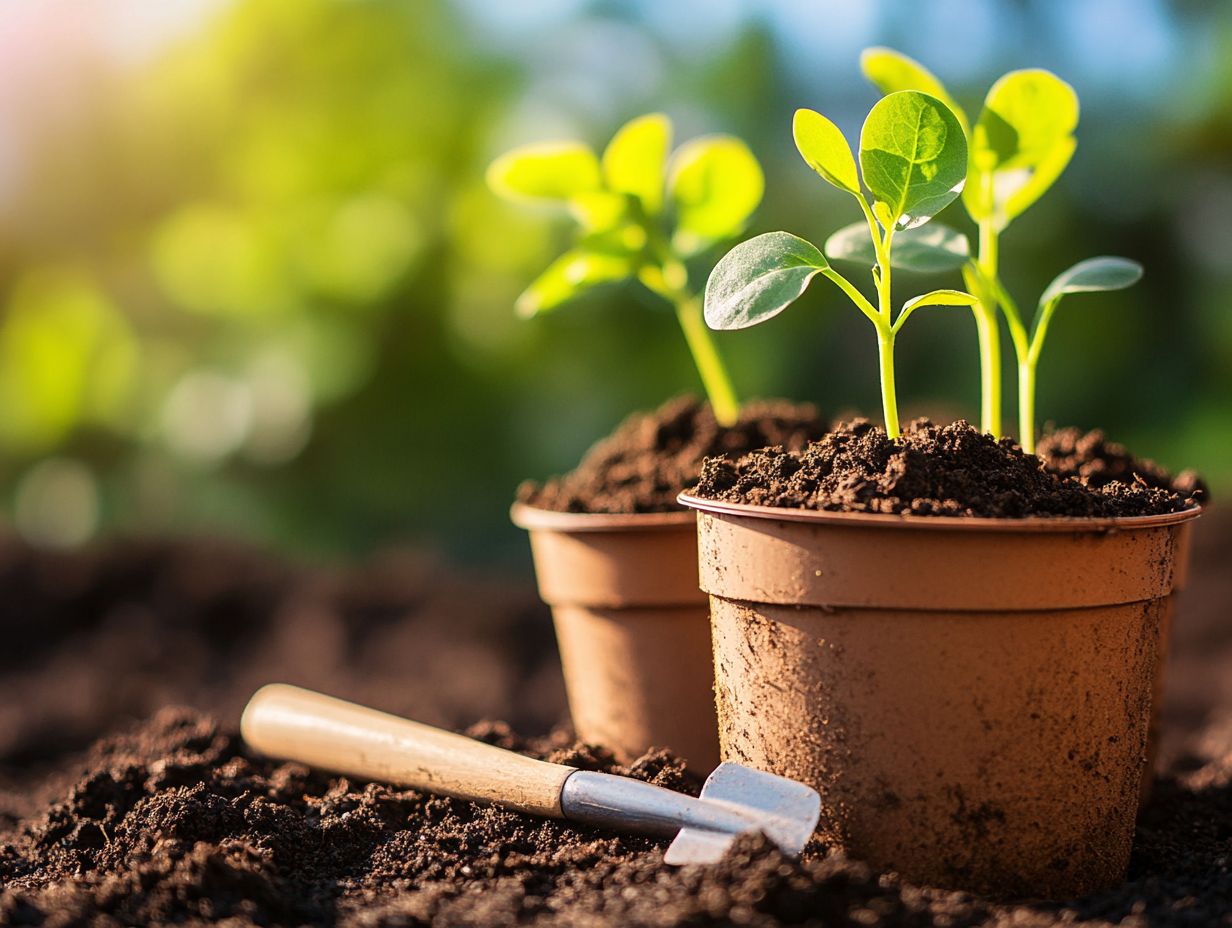
- Soil provides natural nutrients and support for plant growth, making it a beneficial medium for propagation, especially when considering factors like humidity and soil moisture for optimal root system development.
- Certain plants thrive when propagated in soil; popular choices include pothos and philodendrons, which appreciate well-draining potting soil.
- Consider factors like plant type, climate, and desired growth rate, along with appropriate cutting length, when deciding when to use soil for propagation.
What is Plant Propagation?
Plant propagation is your gateway to creating new plants from various parts of existing ones think seeds, stems, or leaves. This process not only enriches your indoor garden but also offers the delightful opportunity to share your cherished plants with friends and family. Understanding how to grow new plants is essential for anyone looking to elevate their gardening skills and nurture robust plants, as it includes techniques like water propagation and soil-based methods.
Among these techniques, water propagation stands out. By placing cuttings in a container of water until they develop roots, you ll find it s a fantastic option for houseplants like pothos and ZZ plants, both celebrated for their resilience.
Meanwhile, soil propagation allows rooted cuttings to quickly acclimatize to their new environment, benefiting from nutrient-rich soil.
Healthy stems are crucial in both methods, ensuring successful growth and reducing the risk of rot especially for species like philodendrons. By mastering these techniques, you can cultivate a thriving plant collection and find satisfaction in nurturing your green companions from the very beginning, whether through transplanting cuttings or growing plants from seeds.
Benefits of Using Soil for Plant Propagation
Utilizing soil for plant propagation presents an array of advantages, chief among them being the provision of essential nutrients and a stable environment that fosters a robust root system. This method significantly increases your chances of cultivating healthy roots, which are crucial for the long-term survival and growth of your plants.
Soil propagation proves especially effective for a diverse range of plant types, including beloved Aroid family members like pothos and philodendrons, ensuring that your journey as a plant parent is met with success in your gardening endeavors.
Try your hand at soil propagation today and watch your plant collection flourish!
Natural Nutrients and Support for Growth
Potting soil is essential for plant growth. It is packed with natural nutrients that help your plants thrive.
By incorporating organic fish emulsion and maintaining proper soil moisture, you can create an ideal environment for your plants. This encourages robust root growth and overall vitality. Using a rooting hormone can further increase your chances of successful propagation, ensuring that your new plant cuttings flourish.
You ll find various types of potting soil available, each tailored specifically for different plant species. These include soil-less potting mix for delicate seedlings and special cactus mixes for succulents. For example, a cactus mix provides rapid drainage, while a seed-starting blend offers gentle support for delicate seedlings.
The benefits of organic fertilizers, like fish emulsion, lie in their ability to deliver a slow-release source of vital nutrients, including nitrogen, phosphorus, and potassium. These are key players in promoting lush foliage and vibrant blooms.
To keep soil moisture balanced, techniques like mulching help retain moisture and minimize evaporation. Applying rooting hormones with auxins stimulates root development. This helps you nurture healthy, vigorous plants right from the start.
Types of Plants that Thrive with Soil Propagation
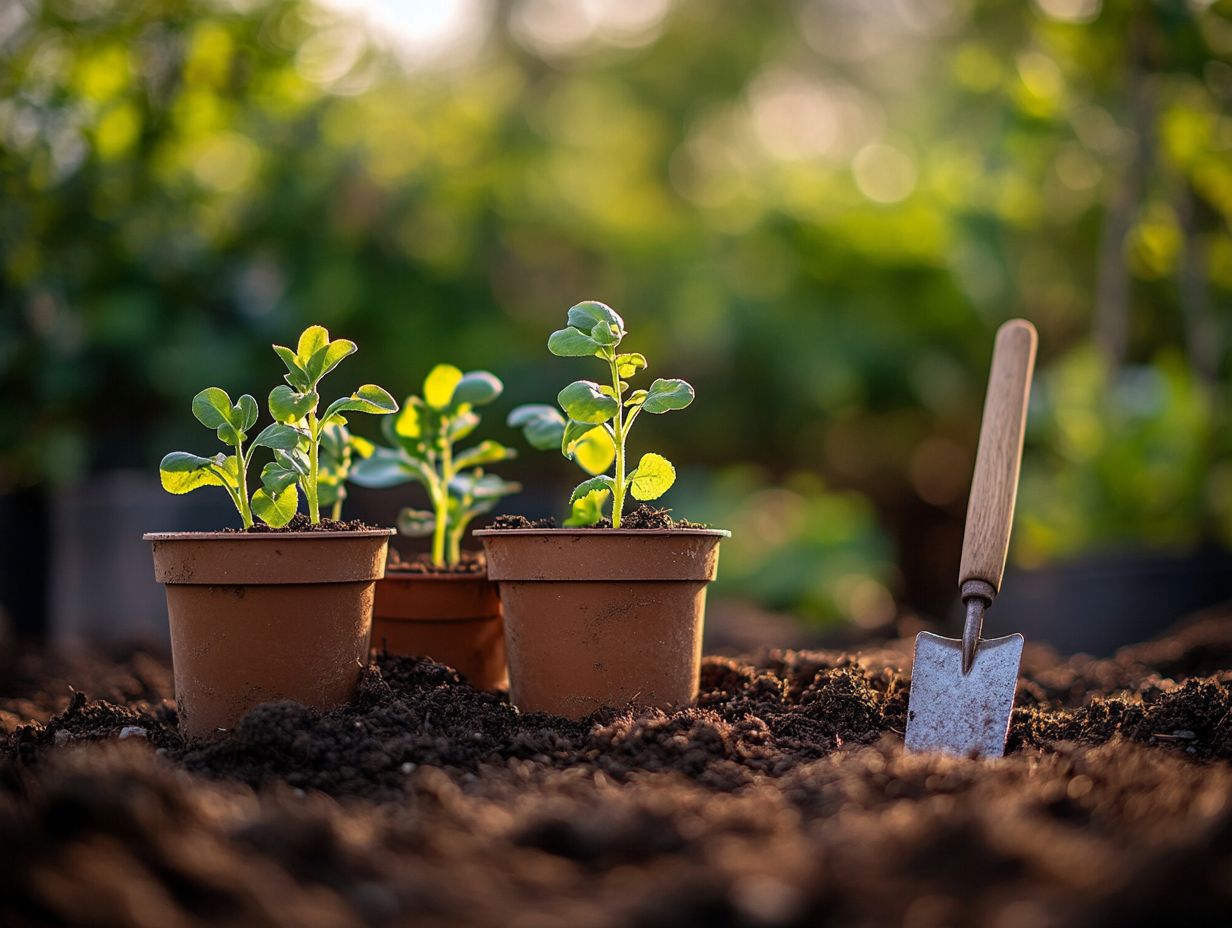
Some plants are perfect for soil propagation! They thrive and offer a rewarding experience for your gardening journey. Popular houseplants like ZZ plants, pothos, and philodendrons particularly flourish when their cuttings are nestled in nutrient-rich potting soil.
Members of the Aroid family, including monsteras, demonstrate impressive resilience in soil environments. This highlights the diverse array of plants that can thrive through effective propagation techniques.
Examples and Characteristics
Popular plants that thrive in soil propagation include pothos and philodendrons. Both are celebrated for their resilient nature and adaptability to indoor settings, making them ideal choices for novice plant parents. Pothos, with their charming heart-shaped leaves, flourish in varying humidity levels. They can handle fluctuations in soil moisture, making them a forgiving choice for beginners.
Philodendrons have unique traits that enable them to thrive, particularly when given a well-draining potting mix and sufficient light. While pothos can cheerfully grow in low-light conditions, they truly shine with more vibrant foliage when basking in bright, indirect sunlight. Their preference for slightly moist soil allows them to go longer between waterings, but it’s crucial to ensure their pots have adequate drainage holes to avoid root rot.
Philodendrons love warmth and bright, indirect light. They require a delicate balance of moisture to truly flourish, which makes them ideal candidates for careful watering practices and proper humidity levels. For successful propagation, take cuttings from healthy stems, ideally including a node to encourage optimal root development. Place those cuttings in either water or moist soil, and provide warm conditions to help roots establish themselves with ease.
When to Use Soil for Plant Propagation
Understanding the right moments to utilize soil for plant propagation is crucial for fostering successful rooting and growth of your cuttings. Act now! The best time to propagate is during the growing season, when plants are actively growing and ready to recover quickly from being cut back.
By adhering to an appropriate watering cycle and selecting the ideal pot size, you can markedly increase the likelihood of your cuttings establishing themselves successfully in the soil.
Factors to Consider
When diving into soil propagation, key factors influence the success of your cuttings. These include humidity levels, cutting length, and careful preparation.
Pay close attention to the humidity levels in your environment, the length of your cuttings, and the all-important root node, the part of the cutting that helps roots grow. Taking the time to prepare your cuttings properly and ensuring that your pot has a drainage hole can dramatically affect the overall health and vitality of your propagated plants.
These elements are vital for quick root formation and strong new plants! For instance, keeping humidity levels between 65% and 80% is ideal, as it helps prevent moisture loss that can lead to wilting and, ultimately, death.
Regarding cutting length, aim for sections that are 4 to 6 inches long. This gives enough material for roots to establish while allowing the plant to concentrate its energy on regeneration, enhancing the chances of successful rooting and vibrant top growth.
Preparing your cutting with a clean cut and removing any lower leaves encourages healthier growth and reduces the risk of rot.
Lastly, ensuring that your pots have proper drainage lets excess moisture escape, further enhancing your chances of successful propagation.
How to Prepare Soil for Plant Propagation

Preparing the soil for plant propagation requires a careful approach to create an environment that fosters robust root growth and supplies essential nutrition for your cuttings. Begin by choosing a premium potting mix rich in organic matter, ensuring it offers excellent drainage. This balance is crucial for maintaining optimal soil moisture.
Incorporate a balanced fertilizer to boost the initial growth of new roots and enhance the overall vitality of your new plants grown from cuttings.
Step-by-Step Guide
A step-by-step guide to preparing soil for plant propagation starts with gathering the essential materials and tools: potting soil, pots with drainage holes, and watering equipment.
- Begin by mixing the potting soil with perlite or vermiculite to boost drainage, then fill your pots with this blend.
- Ensure the soil is adequately moistened before placing your cuttings. This will effectively promote root growth.
Once your soil is prepped, think carefully about where to position the pots to optimize plant growth. Place them in a cozy, bright spot to help them thrive, but steer clear of direct sunlight, which can scorch those tender cuttings.
Water the soil thoroughly until excess moisture drains out. This keeps the soil damp but not soggy, ensuring healthy roots and preventing rot.
During rooting, monitor moisture levels closely to keep the soil moist. A humidity dome and bright indirect light or a plastic bag draped over the pots can create the perfect environment for your plants. As the roots begin to establish, apply a gentle fertilizer, such as organic fish emulsion to provide essential nutrients, significantly enhancing the growth process.
Troubleshooting Common Issues
Troubleshooting common issues in soil propagation and water propagation in glass vessels can significantly elevate your success in rooting plant cuttings, including ZZ plants and pothos plants, paving the way for healthy growth of various plant types and vibrant plants. You may encounter challenges such as overwatering or underwatering, which can create complications with soil moisture, root rot, and ensuring healthy roots.
By grasping the best watering schedule and tips for changing water and being attentive to the specific needs of your cuttings, you can adeptly tackle these issues and enhance your overall plant care, especially when transplanting cuttings.
Addressing soil-related issues and the importance of potting soil is essential for the successful growth of your propagated plants, especially for nurturing healthy roots. Common challenges you might encounter include inadequate drainage, which can lead to waterlogged soil. Inadequate drainage holes are vital for healthy growing plants. Another issue is insufficient humidity, which affects root growth and stifles development.
By diagnosing these problems early and taking corrective measures like enhancing drainage and adjusting humidity levels you can significantly elevate the effectiveness of your soil propagation efforts for rooted cuttings.
It is crucial to monitor pH levels, as they affect cutting preparation. Extreme acidity or alkalinity can hinder nutrient availability, which is crucial for healthy stem development. A straightforward soil test kit will help you pinpoint any pH imbalances. Armed with this information, you can amend the soil with lime and perlite to raise the pH or sulfur and vermiculite to lower it, crafting the ideal environment for optimal plant growth.
Enhancing soil structure through the addition of organic matter, such as compost, will improve nutrient retention and support the root system while cultivating a thriving ecosystem for beneficial microorganisms. Together, these steps will lead to robust root systems that support healthy, vigorous plants.
Frequently Asked Questions
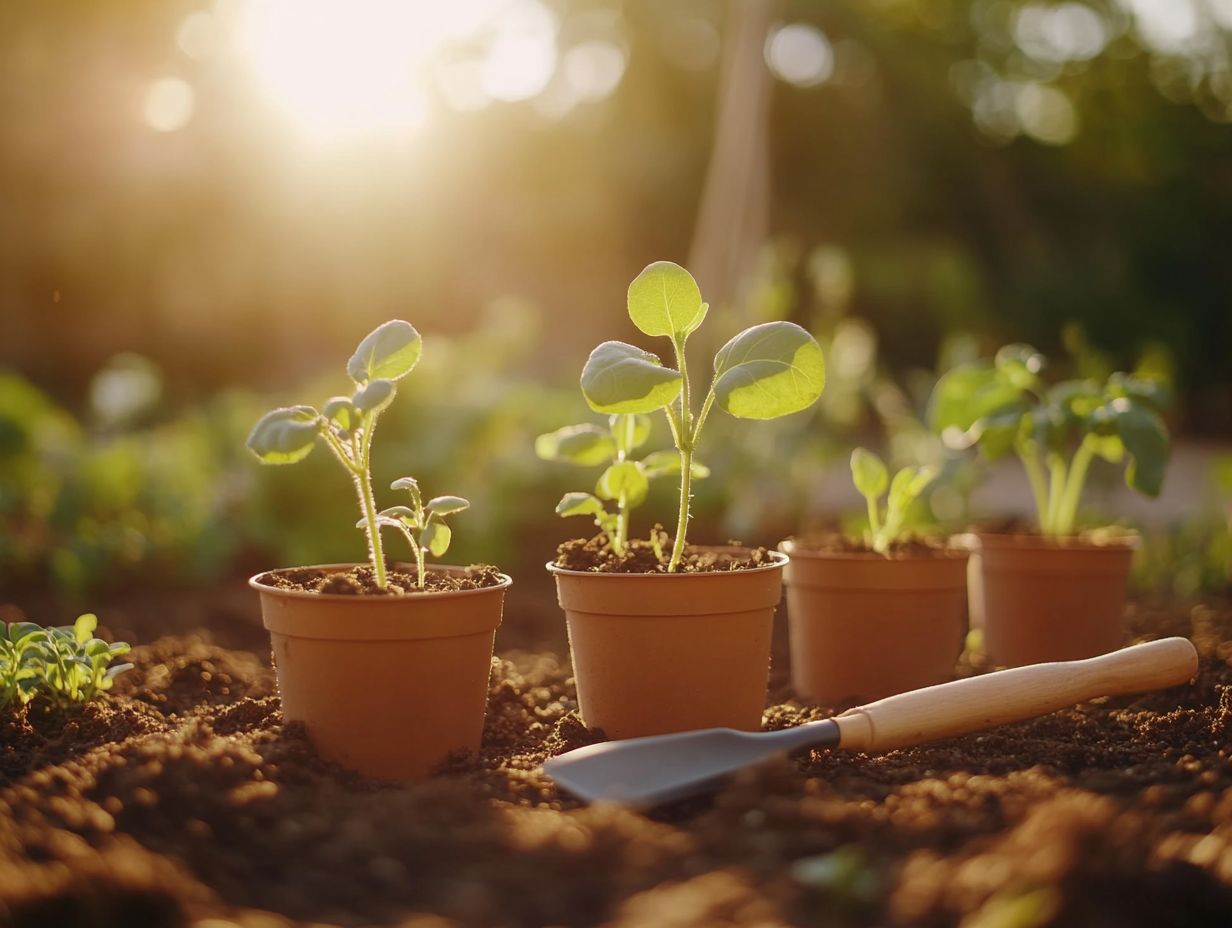
What is the best time to use soil for plant propagation?
Spring is the perfect time to start your soil propagation journey when temperatures are mild and there is enough natural sunlight.
Can I use soil for plant propagation in any type of container?
Yes, you can use soil for plant propagation in various types of containers such as pots, trays, or even recycled containers like egg cartons or yogurt cups. Just make sure the container has proper drainage holes.
What type of soil should be used for plant propagation?
The best type of soil for plant propagation is a well-draining, sterile potting mix or soil-less potting mix. Avoid using garden soil, as it may contain pests or diseases that can harm your new plants.
Is it necessary to sterilize the soil before using it for plant propagation?
Yes, it is recommended to sterilize the soil before using it for plant propagation. This helps to kill any harmful bacteria, fungi, or pests present in the soil. You can do this by baking the soil in the oven or using a microwave.
Are there any specific techniques for using soil for plant propagation?
Yes, a few techniques can help you achieve better results when using soil for propagation. Ensure that the soil is moist but not soggy, use rooting hormone to enhance root growth, and provide enough warmth and sunlight for your plants.
Can I reuse the soil after plant propagation?
Yes, you can reuse the soil after plant propagation, but it is important to sterilize it first. Mixing in some fresh potting mix can also help replenish nutrients. It is advisable to replace the soil after a few uses to ensure healthy plant growth.
Now that you have all this information, why not start your plant propagation journey today? Experiment with different soils and techniques for thriving plants!


